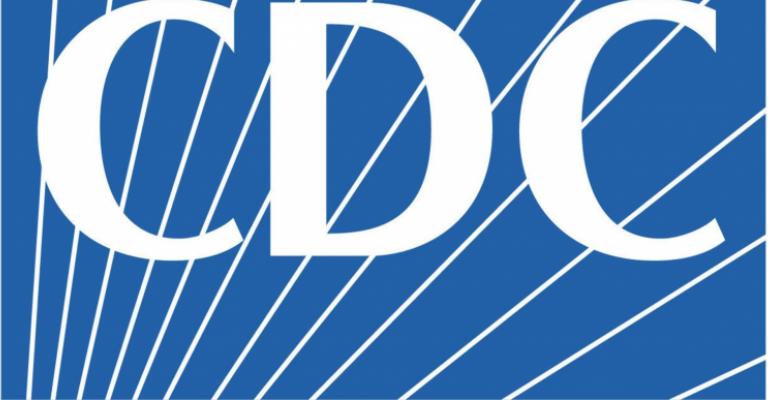Opting in are Carnival Corp.'s nine cruise brands, Royal Caribbean Group and MSC Cruises USA. Norwegian Cruise Line Holdings also reconfirmed its Jan. 14 decision for its three cruise brands — Norwegian Cruise Line, Oceania Cruises and Regent Seven Seas Cruises — to opt in.
'Changes better reflect latest science'
Cruise Lines International Association said the CDC's changes 'better reflect the latest science and data — and, importantly, recognize the effectiveness of cruise protocols that are unmatched by virtually any other commercial setting.'
CLIA called the cruise industry 'a leading model for successful COVID-19 risk mitigation' adding that this has meant the incidence of COVID-19 onboard cruise ships is a 'fraction of what occurs on land and hospitalizations are extraordinarily rare.' According to the association, even at the height of the Omicron surge, hospitalizations were 80 times lower than on land in the US.
Here are the key changes to the CDC protocols.
Children under 5 excluded from vaccination calculation
Children under 5 — who are currently ineligible for COVID-19 vaccination — are excluded from the determination of the percentage of passengers onboard who are fully vaccinated or up to date with their vaccines.
Mask requirements
Indoor masks requirements will be set by the individual cruise lines for ships sailing under the 'highly vaccinated' (95% of the onboard population fully vaccinated) and 'standard of excellence' (95% up to date with vaccines, meaning boosted) tiers.
Ships that do not meet the 95% 'highly vaccinated' threshold may have separate indoor and outdoor areas onboard where fully vaccinated passengers and up to date passengers may remove masks.
Isolation
Symptomatic, COVID-19 positive individuals can end isolation five days after the onset of symptoms if they're symptom-free for 24 hours with two negative antigen tests 24 hours apart. Individuals must then wear a mask for an additional five days after ending isolation.
Asymptomatic individuals can end their isolation five days following an initial positive test, followed by two negative antigen tests 24 hours apart. Individuals must then wear a mask for an additional five days.
Symptom-free means fever free for 24 hours without medications and symptoms are improving, but allows for improving cough and continued loss of taste/smell.
Quarantine
Quarantine is now based on the vaccination status of the individual, not the vaccination level of the voyage.
Individuals who are up to date on vaccinations must quarantine for five days from the time of exposure and have a negative antigen test at the end of their quarantine period. Individuals must continue to wear a mask for an additional five days following the end of quarantine. Alternatively, individuals who are up to date on vaccinations may, in lieu of quarantine, be tested daily with negative results for five days and continue to wear a mask for an additional five days. In both options, dining must be in-cabin for the full 10 days.
Individuals who are not up to date on vaccinations must quarantine for 10 days. Alternatively, individuals who are not up to date may quarantine for five days followed by five days of daily testing with negative results, wear a mask for the full 10 days and dine in-cabin.
Boosters
Cruise lines will be afforded one month with regard to determination of passenger and crew eligibility for boosters to allow for the time for implementation. CLIA said many member lines are already well under way in the booster process for crew.
Testing
For passengers who are up to date on vaccinations, pre-embarkation testing can be conducted three days prior to boarding instead of two days prior.
Regarding surveillance testing for crew, the required frequency for routine testing of crew members who are up to date on vaccinations has been adjusted to align based on the color code of the ship. For 'green' ships, testing must occur at least every 28 days. For 'yellow' and 'orange' ships, testing must occur at least every two weeks. For 'red' ships, testing must occur at least weekly.
Carnival, HAL, Princess, Seabourn: masks optional March 1
Carnival Cruise Line, Holland America Line, Princess Cruises and Seabourn all said masks will become optional — recommended but not required — with sailings from March 1, adding there may be certain venues and events where masks are required. And, starting March 1, some additional flexiblity in pre-cruise testing will become available.
All will continue to meet the standard for vaccinated cruises. The Carnival brand noted children younger than 5 will not be included in the calculation so they won't need an exemption to sail.
MSC Cruises USA will require vaccination for 5 and up starting April 23
Update: MSC Cruises' ships serving US ports will continue to operate under existing protocols until Feb. 25, at which time the company will have communicated and implemented any changes necessary to to align with the CDC’s program.
Beginning with sailings departing April 23, passengers 5 and older must be fully vaccinated. As a result, the line's US-based ships will begin operating as 'highly vaccinated' under the program at that time.
Copyright © 2024. All rights reserved. Seatrade, a trading name of Informa Markets (UK) Limited.
Add Seatrade Cruise News to your Google News feed.  |

